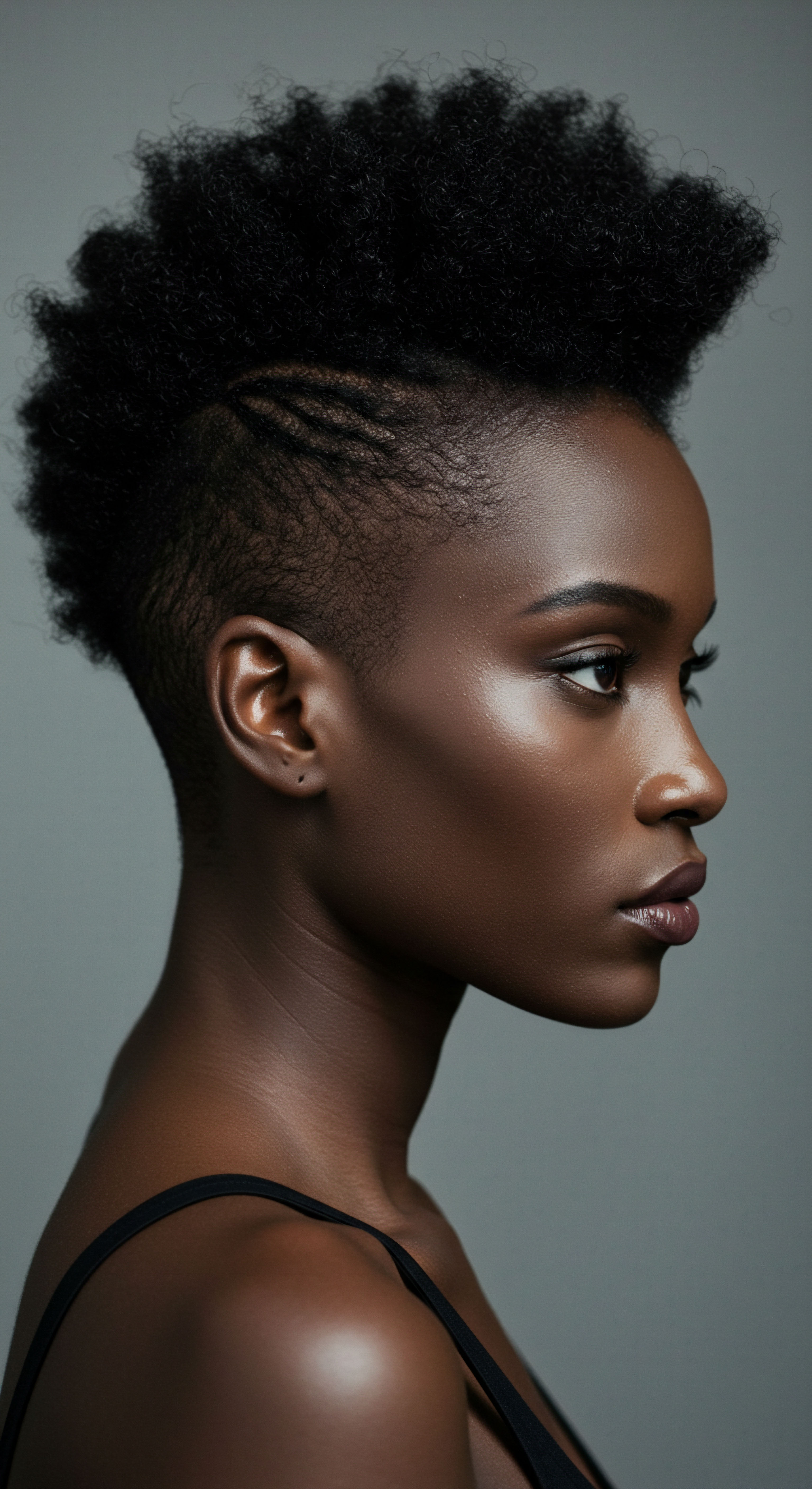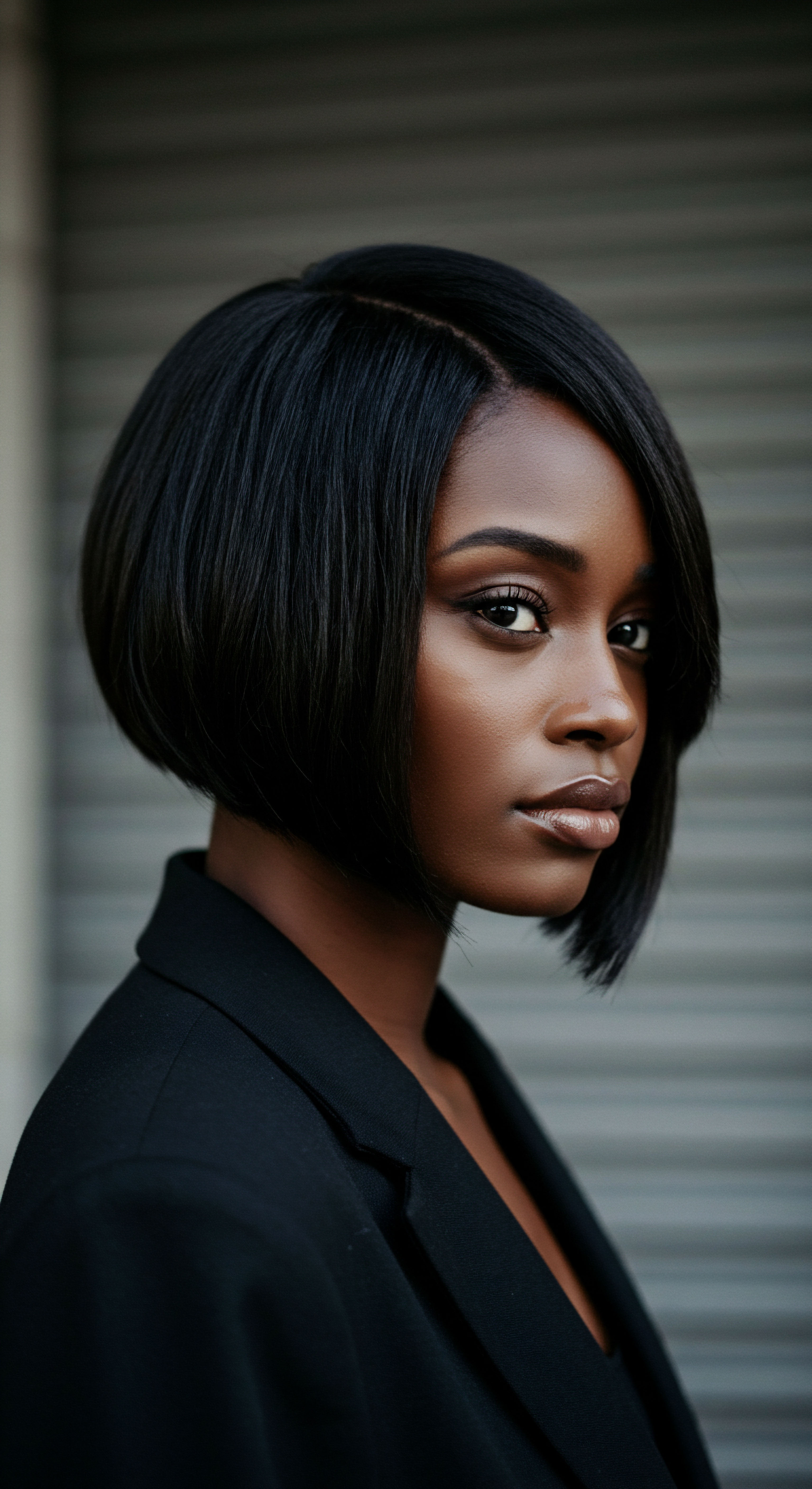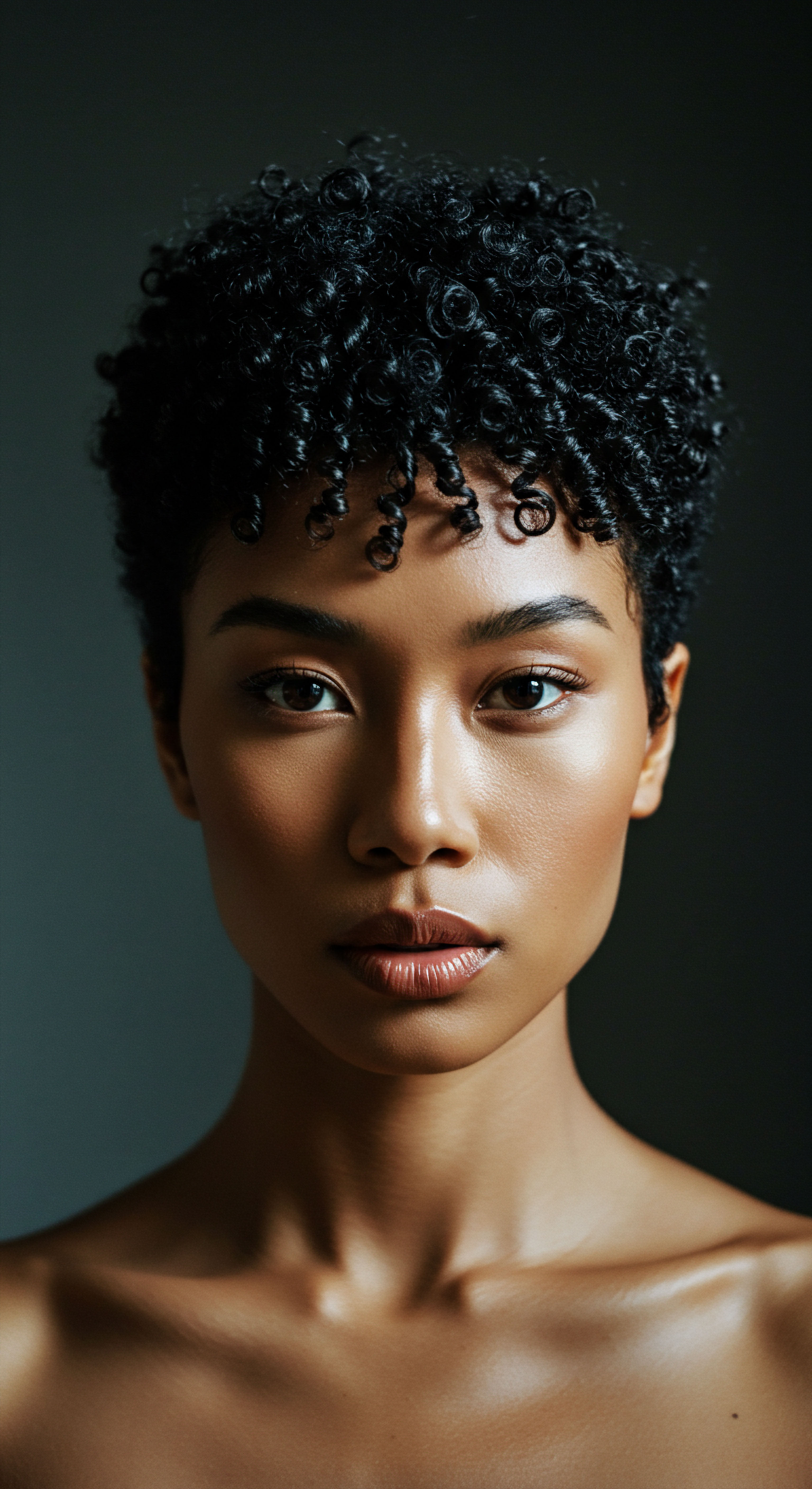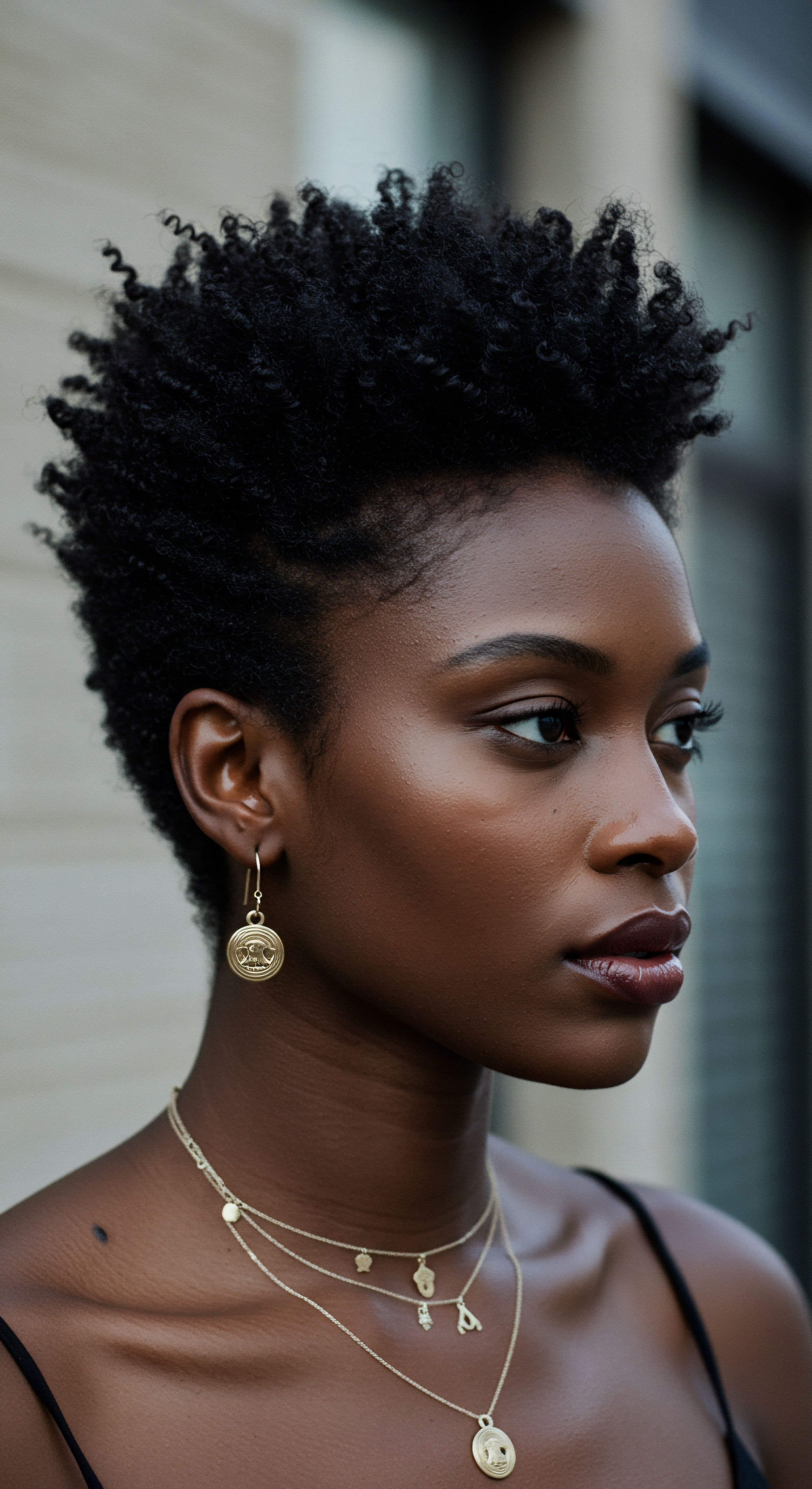
Roots
Consider for a moment the profound intimacy of hair, not merely as an adornment, but as a living chronicle of identity, lineage, and cultural spirit. For many, particularly those within Black and mixed-race communities, hair carries generations of stories, traditions, and an unspoken language. It is a canvas of ancestral memory, a testament to resilience, and a vibrant expression of self.
Yet, this deeply personal aspect of being has, for too long, been subjected to scrutiny, judgment, and systemic barriers within spaces where professionalism and belonging are often defined by Eurocentric beauty norms. The very texture, the natural curl, the protective styles that shield and celebrate, have been weaponized, transforming a source of pride into a target for prejudice.
The CROWN Act legislation steps into this historical context, a beacon shining upon a long-standing shadow. Its fundamental purpose arises from a recognition that discrimination based on hair texture or protective hairstyles is not a superficial slight; rather, it strikes at the heart of racial equity and personal liberty. This legislative action seeks to dismantle deeply ingrained biases that have historically marginalized individuals, particularly Black women, in educational and professional settings. It acknowledges that denying someone an opportunity, or forcing them to alter their natural appearance, solely because of their hair, amounts to racial discrimination.

What Historical Roots Inform Hair Discrimination?
To grasp the CROWN Act’s true significance, one must acknowledge the historical arc of hair discrimination. The journey of textured hair in Western societies has been fraught with attempts to control and suppress its natural form. During eras of enslavement and colonization, forced assimilation often demanded the abandonment of traditional African hairstyles in favor of European aesthetics.
This legacy persisted through Jim Crow laws and into contemporary society, where biases against natural Black hair became normalized in schools and workplaces. Policies that deemed dreadlocks, braids, or afros “unprofessional” or “distracting” are not isolated incidents; they are echoes of a systemic effort to diminish and control Black identity.
These historical currents shaped a societal understanding where certain hair textures and styles were deemed acceptable, while others were not. This societal conditioning, often subconscious, has led to tangible harm. It created an environment where individuals felt compelled to chemically straighten their hair, wear wigs, or adopt styles that caused physical discomfort, all to conform to an unspoken code of conduct that implicitly penalized their natural heritage.
The CROWN Act emerges from a deep historical understanding of hair as a profound marker of identity, often subjected to racial bias in professional and educational settings.

Understanding the Core Problem of Hair Bias
The problem at the heart of hair discrimination is not about hygiene or actual professional capability. It rests upon subjective interpretations of appearance that are inherently biased. When a school dress code prohibits “excessive” hairstyles, or a workplace policy bans “unconventional” hair, these seemingly neutral terms often disproportionately impact individuals with textured hair. The criteria for what constitutes “professional” hair have historically been aligned with straight hair textures, leaving little room for the natural variations and protective styles common within Black communities.
Consider the emotional and psychological toll. A child sent home from school because of their braids, or an adult denied a job because of their locs, experiences a profound sense of invalidation. This sends a clear, damaging message ❉ your natural self is not acceptable. The CROWN Act directly challenges this insidious message, affirming that one’s natural hair, and the styles chosen to protect and present it, are an intrinsic part of racial identity and deserving of legal protection.
- Historical Context ❉ Hair discrimination has deep roots in efforts to assimilate and control Black identity.
- Implicit Bias ❉ Subjective standards of “professionalism” often reflect Eurocentric beauty norms.
- Psychological Impact ❉ The rejection of natural hair causes emotional distress and invalidation.

Ritual
Stepping from the foundational understanding of hair’s deep roots, we turn now to the daily and periodic practices that shape our textured hair journeys. These rituals, whether they involve the intricate art of braiding, the gentle coil of twists, or the thoughtful application of nourishing treatments, are more than mere routines; they are acts of self-care, cultural connection, and personal expression. Yet, these very practices, so vital to the health and integrity of textured hair, have frequently been the flashpoints for discriminatory encounters. The CROWN Act, in its essence, safeguards the right to engage in these rituals without fear of professional or academic reprisal.
The legislation acknowledges that protective styles are not simply fashion choices; they are often a health necessity for textured hair, shielding delicate strands from environmental damage, reducing breakage, and promoting growth. Forcing individuals to abandon these styles or to chemically alter their hair for conformity’s sake directly undermines hair wellness and perpetuates harmful practices. The CROWN Act steps in as a shield, allowing individuals to maintain their hair’s vitality and cultural authenticity without facing adverse consequences in their daily lives.

How Does Hair Ritual Intersect With Professional Settings?
The professional landscape has long been a battleground for textured hair. Dress codes, often vaguely worded, have been selectively applied to penalize natural hairstyles. This creates a dilemma for individuals ❉ compromise their hair health and cultural expression, or risk their livelihood.
The CROWN Act directly addresses this by prohibiting discrimination based on hair texture and protective styles in employment. This means an individual cannot be denied a job, fired, or disciplined simply because they wear braids, locs, twists, or an afro.
This legal protection shifts the burden from the individual to conform, to the institution to adapt. It encourages workplaces and schools to re-evaluate their policies and foster environments that genuinely celebrate diversity, extending beyond superficial acknowledgments to tangible respect for cultural identity. For example, consider the impact on a professional seeking advancement. Without CROWN Act protections, they might feel pressured to chemically straighten their hair, a process that can lead to significant damage and scalp irritation over time, simply to meet an unspoken “corporate standard.” With the Act in place, their choice to wear healthy, culturally resonant styles is affirmed, allowing them to focus on their skills and contributions rather than their appearance.
The CROWN Act secures the right to maintain natural hair rituals and protective styles without facing professional or academic penalties.

The CROWN Act’s Reach Beyond Employment
The legislation’s protective umbrella extends beyond the workplace to educational institutions. Children, particularly young Black girls, have faced disproportionate disciplinary actions, or even exclusion, due to their natural hair. These experiences can be deeply traumatizing, affecting a child’s self-esteem, sense of belonging, and academic performance.
The CROWN Act ensures that students can attend school, participate in extracurricular activities, and learn without being penalized for their hair. This allows for a more inclusive learning environment where children can thrive authentically.
The spirit of the CROWN Act also influences public accommodations. While its primary focus is employment and education, its broader message of affirming natural hair textures and styles permeates societal consciousness. It signals that such discrimination is unacceptable across various public interactions, contributing to a more respectful and equitable public sphere. This legislative action fosters a climate where the diverse beauty of textured hair is not merely tolerated, but respected and valued as a legitimate expression of self.
| Factor Professional Opportunities |
| Pre-CROWN Act Environment Limited by subjective appearance standards, leading to self-censorship or denial of roles. |
| Post-CROWN Act Implications Expanded, as natural hair is legally protected from discriminatory practices. |
| Factor Hair Health & Practices |
| Pre-CROWN Act Environment Pressure to chemically alter or heat style, often resulting in damage and discomfort. |
| Post-CROWN Act Implications Freedom to choose protective and healthy styles without fear of professional penalty. |
| Factor Sense of Belonging |
| Pre-CROWN Act Environment Feeling of exclusion or "otherness" due to non-conforming appearance. |
| Post-CROWN Act Implications Increased inclusion and affirmation of cultural identity in the workplace. |
| Factor The CROWN Act seeks to mitigate historical biases that have negatively impacted Black women's professional journeys. |

Relay
Beyond the personal and the practical, the CROWN Act represents a profound societal relay, passing the baton of progress from individual advocacy to systemic change. It compels us to consider the intricate interplay of legal frameworks, cultural understanding, and the ongoing pursuit of true equity. This legislation transcends simple anti-discrimination measures; it acts as a critical lever for re-shaping public consciousness and challenging deeply embedded biases that have, for too long, dictated norms of appearance and professionalism. The purpose of the CROWN Act, viewed through this lens, is to formalize a societal shift, translating a moral imperative into legal enforceability.
The Act’s design acknowledges that existing civil rights laws, while foundational, often fell short in explicitly addressing hair discrimination. Courts have historically grappled with whether hair-based discrimination constitutes racial discrimination, sometimes ruling that hair choices are mutable and therefore not protected. The CROWN Act unequivocally clarifies this ambiguity, stating that discrimination based on hair texture or protective hairstyles is, indeed, a form of racial discrimination. This clarity is not merely semantic; it provides a concrete legal basis for individuals to seek redress and for institutions to understand their obligations.

How Does The CROWN Act Address Systemic Bias?
The legislation’s impact extends beyond individual cases; it addresses systemic bias by compelling institutions to examine and revise their policies. When a law specifically names and prohibits hair discrimination, it forces employers, schools, and other entities to proactively review their dress codes, grooming policies, and hiring practices. This proactive re-evaluation can lead to broader cultural shifts within organizations, fostering environments where diverse expressions of identity are genuinely welcomed, rather than merely tolerated.
For instance, a 2023 study published in the journal Social Psychological and Personality Science by G. E. Johnson and colleagues explored the societal perceptions of natural Black hairstyles. The research found that natural Black hairstyles, such as afros and locs, were perceived as less professional than straight hair, even among Black raters, highlighting the internalization of dominant beauty standards.
This empirical data underscores the deep-seated nature of the bias that the CROWN Act aims to dismantle. The legislation provides a legal mandate to counteract these pervasive, often unconscious, biases, pushing society towards a more inclusive definition of professionalism that values individual authenticity over antiquated norms.
The CROWN Act serves as a legal mandate, pushing society to redefine professionalism and embrace diverse expressions of identity.

What Are The Broader Societal Implications?
The CROWN Act also plays a vital role in promoting psychological well-being and fostering a stronger sense of self among those with textured hair. When individuals are free from the pressure to conform their appearance, they can direct their energy towards their contributions, creativity, and personal growth. This freedom from constant self-monitoring and anxiety about appearance can significantly reduce stress and improve mental health outcomes. It sends a powerful message to younger generations that their natural beauty is valid and respected, laying a foundation for greater self-acceptance and confidence.
Furthermore, the CROWN Act contributes to a richer, more vibrant societal fabric. By validating diverse hair expressions, it enriches the visual landscape of communities and workplaces. It signals a move away from a monolithic ideal of beauty towards one that celebrates the inherent variations and cultural richness of humanity.
This legislative stride represents not an end point, but a crucial step in an ongoing conversation about racial equity, personal autonomy, and the evolving definition of what it means to belong in a truly diverse society. It acts as a foundational stone upon which further advancements in civil rights and cultural recognition can be built.
- Legal Clarity ❉ The CROWN Act explicitly defines hair discrimination as racial discrimination.
- Policy Reform ❉ It compels institutions to review and revise their appearance policies.
- Cultural Shift ❉ The legislation encourages broader societal acceptance of diverse hair textures.
- Psychological Impact ❉ It reduces pressure to conform, supporting mental well-being and self-acceptance.

Reflection
The CROWN Act, at its heart, is a testament to the enduring power of self-expression and the quiet strength found in authenticity. It reminds us that what we wear on our heads, in its natural form or chosen style, carries stories that reach far beyond personal preference. It speaks to a collective history, a cultural narrative, and an individual’s journey toward self-acceptance in a world that has often sought to dictate how one should appear.
As states continue to adopt this vital legislation, we witness a gentle but firm realignment of societal values, moving closer to a future where dignity and respect are universally extended, strand by beautiful strand. The true measure of its purpose will be seen not just in legal victories, but in the quiet confidence of every individual who can now walk freely, their hair a crown of their own choosing.

References
- Johnson, G. E. Glick, P. & Johnson, D. D. (2023). Hair Discrimination ❉ A Social Psychological Perspective. Social Psychological and Personality Science, 14(3), 333-340.
- Crenshaw, K. W. (1991). Mapping the Margins ❉ Intersectionality, Identity Politics, and Violence Against Women of Color. Stanford Law Review, 43(6), 1241-1299.
- hooks, b. (1992). Black Looks ❉ Race and Representation. South End Press.
- Patton, M. Q. (2015). Qualitative Research & Evaluation Methods ❉ Integrating Theory and Practice. SAGE Publications.
- Ford, L. (2019). Hair Story ❉ Untangling the Roots of Black Hair in America. St. Martin’s Press.
- Wilkerson, I. (2010). The Warmth of Other Suns ❉ The Epic Story of America’s Great Migration. Random House.
- Thompson, C. (2018). Hair ❉ A Cultural History. Bloomsbury Academic.
- Byrd, A. D. & Tharps, L. L. (2001). Hair Story ❉ Untangling the Roots of Black Hair in America. St. Martin’s Press.
- Hall, S. (1997). Representation ❉ Cultural Representations and Signifying Practices. SAGE Publications.
- Butler, J. (1990). Gender Trouble ❉ Feminism and the Subversion of Identity. Routledge.